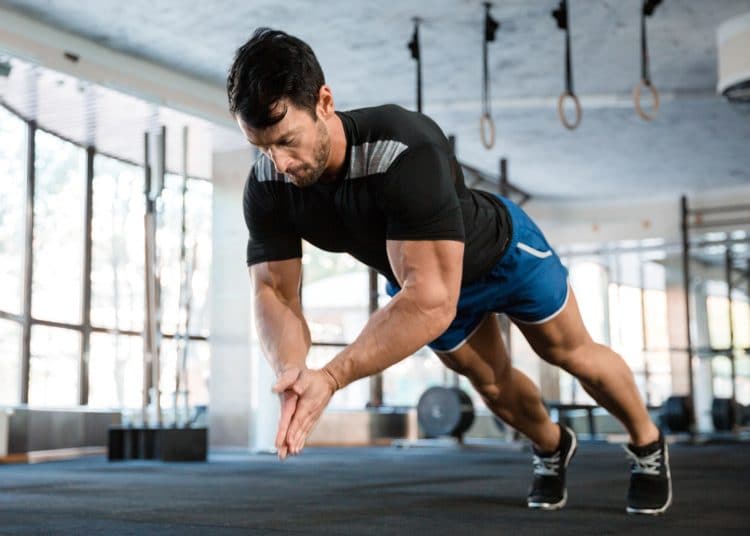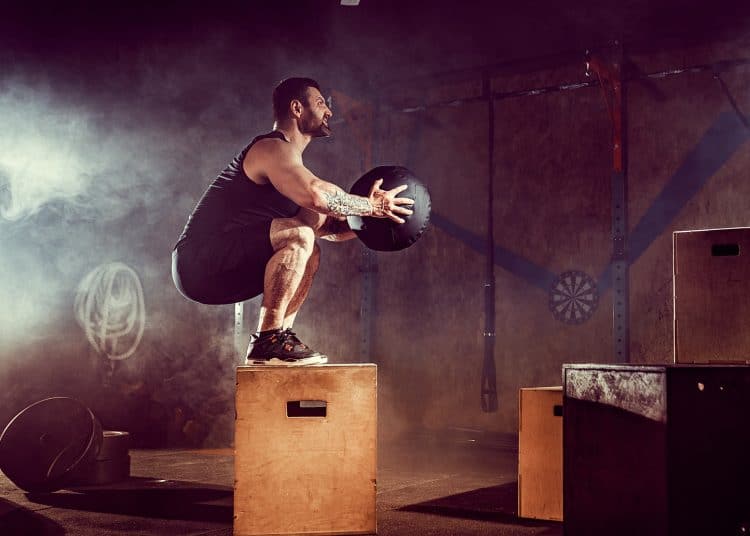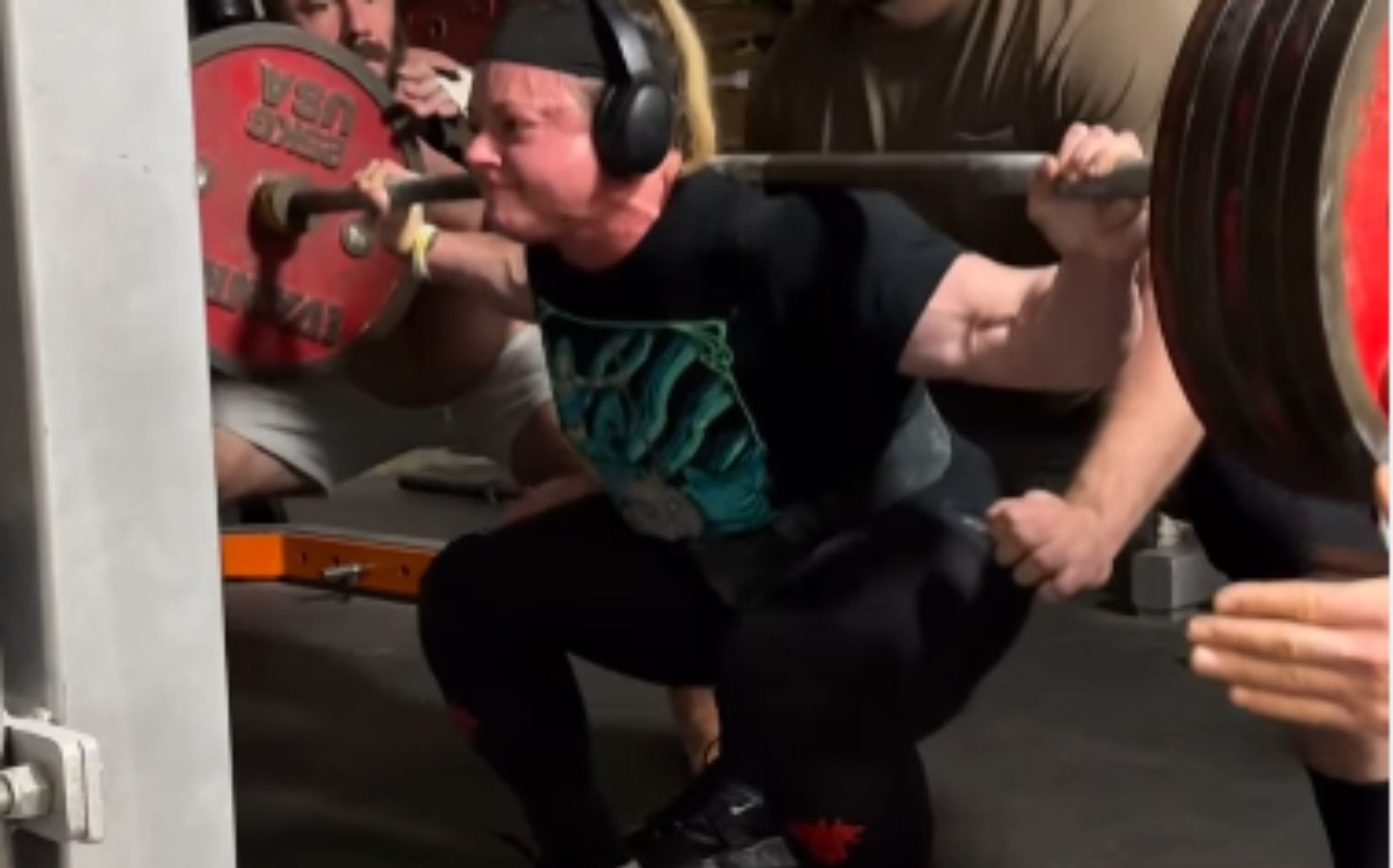While there is nothing wrong with training to look fit and strong, some exercisers want to perform better too. After all, if you are any sort of athlete other than a bodybuilder, you’re not judged on the size of your biceps or the separation in your quads. Instead, it’s your ability to run, jump, kick, punch, and throw that matters.
In training, your body adapts to the type of workouts you do. So, if you lift heavy weights slowly, you will improve your ability to generate force slowly. In contrast, if you want to be more explosive, you need to be explosive in your workouts.
One of the best ways to develop explosive speed is plyometrics. Unfortunately, this training method is often misused and done incorrectly. Improperly performed plyometrics can actually make you slower and less explosive, even as they improve your conditioning or burn fat.
In this article, we explain what REAL plyometric training is, how to do it, and reveal some of the best exercises for building explosiveness and speed.
What is Plyometric Training?
The aim of plyometric training is to develop muscle power. Power is your ability to generate force quickly. For example, where a slow, heavy bench press demonstrates strength, a plyo or clap push-up is a demonstration of power.

Power plays an integral part in most sports. The more powerful you are, the harder you’ll be able to punch, kick, throw, tackle, and block, the faster you’ll be able to sprint and turn, and the higher and longer you’ll be able to jump.
Level Up Your Fitness: Join our 💪 strong community in Fitness Volt Newsletter. Get daily inspiration, expert-backed workouts, nutrition tips, the latest in strength sports, and the support you need to reach your goals. Subscribe for free!
Power is also useful in strength sports, including powerlifting and strongman. Being powerful means that you’ll be able to lift heavy weights faster, harnessing the mechanical advantage of momentum, and blasting through sticking points.
Plyometric exercises include things like jumps and throws and involve three critical phases:
Eccentric loading
During this phase, your muscles lengthen or stretch under tension. This part of the movement tells your muscles that they’re about to do some serious work and triggers something called the stretch-shortening reflex, or SSR for short.
In simple terms, the more powerfully you load/stretch your muscles, the more powerfully they shorten and contract. As such, most plyometric exercises start with a rapid eccentric loading phase, such as jumping off a raised platform, or quickly descending into a squat.
Amortization phase
This is where you turn your eccentric contraction into a concentric contraction. The concentric contraction is where your muscles shorten to generate force.
During plyometrics, you must do your best to make this turn-around happen as fast as possible. Any delay between loading and unloading wastes energy and allows the SSR to dissipate. The slower the amortization phase, the less powerful the counter-contraction will be.
Because of this, you may use cues like “red hot floor” to ensure that you transition from loading to unloading as quickly as possible.
Concentric unloading
After the rapid eccentric loading and amortization phases, your muscles are like loaded springs ready to explode. This countermovement should be as strong and purposeful as possible. Whatever exercise you are doing, you need to do your best to generate as much force as you can.
Because of training specificity, your muscles adapt to the stresses put on them. So, for example, if you only jump with 50% of your maximum effort, you’ll train your muscles to generate 50% of their maximal force potential. In other words, you’ll train yourself to jump LOWER and not HIGHER.
So, to improve muscle power, you must give each exercise 100% effort.
Programming Plyometric Training
Some trainers and fitness groups (such as CrossFit) do high-rep plyometrics for conditioning purposes. But, while these workouts are undeniably demanding, they won’t do very much for your actual muscle power. If, as fatigue sets in, you cannot jump as high or throw as far, you’ll just be training yourself to be less powerful.
Instead, when you do plyometric training, the goal is to be as explosive as possible. The moment you start to get fatigued and your performance drops, you’re not training power anymore — you’re training muscular endurance.
That means the best rep range for plyometrics lies between four to 12 reps or 10 to 20 seconds of full-on effort for most lifters. This ensures that each rep can be done with maximum force, and your performance remains high.
Because sets of properly performed plyometrics are so short, you’ll probably feel recovered in 30-60 seconds. However, it can take anywhere from 120 to 180 seconds to fully recover and get the best out of your next power set. Resting less will reduce your power output, making subsequent sets less effective. If in doubt, it’s generally best to rest longer to ensure you are fully recovered.
In terms of the number of sets, there is a fine line between stimulation and annihilation, and more is not always better.
Level Up Your Fitness: Join our 💪 strong community in Fitness Volt Newsletter. Get daily inspiration, expert-backed workouts, nutrition tips, the latest in strength sports, and the support you need to reach your goals. Subscribe for free!
So, instead of trying to see how many sets your body can tolerate, it’s better to see how few you need to achieve the results you want. If you feel that your performance is dropping off, there is no benefit to doing more sets. Three to five sets should be plenty for most exercises.
So, when it comes to effective plyometric training, less is more. Keep your sets short, your rests long, and don’t do so many sets you tire yourself out.
Plyometric Exercises
Here are TEN of the best plyometric exercises for your lower body, upper body, and core.
Please Note: Some of these exercises involve a lot of impact and could aggravate or cause joint injuries. Only attempt these exercises if you have a decent level of strength and conditioning, and only after a thorough warm-up.
1. Squat jump
The squat jump is probably the most straightforward and most accessible lower-body plyometric exercise you can do. It requires no equipment, so you can do it anywhere and anytime. Try doing 2-4 sets of 8-10 reps by way of an introduction to plyometric training.
How to do it:
- Stand with your feet shoulder-width apart, toes turned slightly outward.
- Descend quickly into a quarter-depth squat.
- Using your arms for added momentum, explode upward and leap into the air.
- Land on soft knees to absorb the shock and quickly descend into another rep.
- Make this exercise harder by wearing a weighted vest or holding dumbbells in your hands.
2. Split squat jump
This jumping exercise puts a little more weight on your front leg, providing a convenient way to increase the overload. You’ll also need to work harder to stabilize your hips and knees, increasing inner and outer hip and thigh engagement.
How to do it:
- Starting with your feet together, jump into the air and land with one leg forward and one leg back, i.e., a split squat.
- Descend quickly until your rear knee is just above the floor.
- Extend your legs and leap up into the air, switching legs as you jump.
- Land, descend again and repeat.
- Make this exercise harder by wearing a weighted vest or holding dumbbells in your hands.
Related: Split Squat Exercise Guide
3. Depth jump
Not to be confused with box jumps, the depth jump involves jumping off a raised surface to increase the eccentric loading. This means you’ll need to work harder during the amortization phase, increasing overload and the training effect of the exercise.
Depth jumps are very high impact, so they may not be suitable for overweight exercisers and anyone with foot, ankle, knee, hip, or back issues. Wear shock-absorbing shoes to minimize your risk of injury.
How to do it:
- Stand on a box or bench. Start at about knee height, and increase gradually as you become accustomed to the exercise.
- Step off the box/bench and land in your normal jump stance.
- Rapidly descend into a semi-squat position and then jump upward as high as possible.
- Return to your box and repeat for the desired number of reps. Alternatively, you can line up several boxes and perform a series of depth jumps.
5. Lateral box shuffles
Most jumping exercises are very high impact. That’s not an issue if you’ve got healthy ankles, knees, hips, etc., but could be problematic if you’ve already got any lower body aches and pains. Using a box means this exercise involves less impact than squat jumps and depth jumps while introducing a lateral element to your workouts.
How to do it:
- Stand next to a 12 to 18-inch box or bench.
- Place one foot on top of the middle of the box/bench and keep the other foot on the ground.
- Drive off the foot on the box and travel sideways up and over the box. Use your arms for extra momentum.
- Land softly on the opposite side and then travel back in the opposite direction.
5. Lateral bounds
Adding lateral bounds to your plyometric workouts will improve your ability to move laterally or sideways. This is a superb exercise for skaters, tennis players, football players, and anyone else who needs to be able to change direction quickly.
However, lateral movements can be hard on the knees and ankles, so introduce this exercise gradually. Wear flat shoes so that you’re less likely to catch and edge and trip.
How to do it:
- Stand on one leg in an athletic stance, i.e., supporting knee slightly bent.
- Then, using your arms for extra momentum, drive off your leg and leap sideways to land on the opposite foot.
- Descend into the same athletic stance and then jump back the way you came.
- As with all plyometric exercises, do your best to minimize ground contact time. Imagine the floor is hot.
6. Plyometric push-ups
Plyometric push-ups are good for anyone who wants to throw further or punch harder. This exercise could also help boost your bench press performance, increasing your speed off your chest. For safety, do this exercise on a forgiving surface, such as a gym mat.
How to do it:
- Adopt the push-up position with your arms and body straight, and core braced.
- Bend your arms quickly, stopping with your chest just above the floor.
- Powerfully extend your arms and drive your upper body up, so your hands leave the floor. Clap your hands if you wish.
- Land on slightly bent elbows and repeat.
- Make this exercise easier by bending your legs and resting on your knees. Alternatively, you can do it with your hands on a raised surface, e.g., an exercise bench.
Related: 15 Intense Push-Up Variations for Bodybuilders
7. Kneeling medicine ball chest pass throw
While plyometric push-ups are an effective exercise, they can be hard on your wrists. Also, you need to be very proficient at regular push-ups to do them correctly. Kneeling medicine ball chest pass throws are a more accessible exercise and easier to scale by using lighter or heavier medicine balls.
How to do it:
- Adopt the tall kneeling position a couple of feet in front of a smooth wall. Hold a medicine ball in front of your chest and brace your core. Squeeze your glutes and push your toes into the ground for balance and stability.
- Keeping your torso upright, powerfully extend your arms and drive the ball forward at the wall.
- Catch the ball as it rebounds, and then repeat.
8. Medicine ball slams
There aren’t really any plyometric pulling exercises, unless you want to count clap pull-ups! That said, medicine ball slams work your lats and core, so they’re a decent companion to plyo push-ups and medicine ball chest pass throws.
How to do it:
- Hold your medicine ball in your hands. Bend your knees and adopt an athletic stance with your knees slightly bent and feet about shoulder-width apart.
- Quickly lift the ball above your head and rise up onto your tiptoes.
- Putting your whole body into the throw, hurl the ball down at the ground just in front of your feet.
- Catch the ball as it bounces and repeat.
Related: The 11 Best Medicine Ball Slam Alternatives for Fat Loss, Conditioning, and Muscle Power
9. Rotational medicine ball throw
Rotational medicine ball throws work your legs, upper body and core. Rotational movements are important for throwing, punching, kicking, and even running. A lot of people overemphasize their anterior core, focusing on their rectus abdominis. This exercise targets your obliques more.
How to do it:
- Stand sideways onto a smooth, strong wall and hold a medicine ball with both hands. Adopt an athletic stance with your knees slightly bent.
- Turn away from the wall and take the ball to your back hip.
- Transfer your weight from your back leg to your front leg, rotate your upper body, and throw the ball explosively against the wall. Follow throw with your hips and rear foot.
- Catch the ball with both hands, reset and repeat.
- Do the same number of reps on both sides.
10. Medicine ball sit-up and throw
Where rotational medicine ball throws (#9) were all about your obliques, this exercise focuses more on your anterior core or, more specifically, your rectus abdominis or abs. Like slams, it also involves your lats. You can do this exercise against a wall, as described below, or with a training partner.
How to do it:
- Sit on the floor with your legs bent and feet a few feet away from a smooth wall. Hold a medicine ball in your hands.
- Lie back and lower the medicine ball down behind your head.
- Sit up explosively and hurl the ball at the wall, using your abs and arms in unison.
- Catch the ball as it bounces back and repeat.
More Workouts:
- Powerbuilding Workout Routines
- Build Strength by Greasing The Groove
- Build Strength and Size With The 15 Best Deadlift Variations
- Powerbuilding Basics – How To Get Big And Strong At The Same Time
- Best CrossFit Leg Workouts to Build Strength and Conditioning
Power with Plyometrics – Wrapping Up
Used correctly, plyometric exercises are one of the best ways to increase muscle power. They can also be combined with common strength training exercises to make strength and power supersets.
However you use these exercises, it’s important to remember there is a big difference between gut-busting high-rep plyos that leave your heart racing and heart pounding, and low-rep jumps and throws designed to improve athletic performance.
That said, there is space for both these types of training in most workouts.









